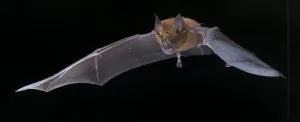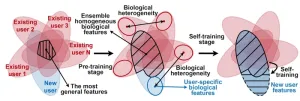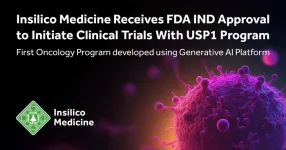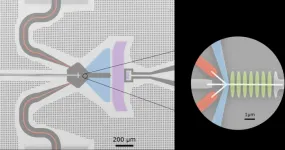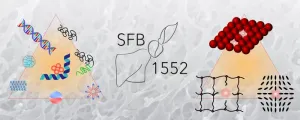PORTLAND, Oregon -- New animal research is helping explain why at least five people have become HIV-free after receiving a stem cell transplant. The study’s insights may bring scientists closer to developing what they hope will become a widespread cure for the virus that causes AIDS, which has infected about 38 million people worldwide.
Published in the journal Immunity, the Oregon Health & Science University-led study describes how two nonhuman primates were cured of the monkey form of HIV after receiving a stem cell transplant. It also reveals that two circumstances must co-exist for a cure to occur and documents the order in which HIV is cleared from the body – details that can inform efforts to make this cure applicable to more people.
“Five patients have already demonstrated that HIV can be cured,” said the study’s lead researcher, Jonah Sacha, Ph.D., a professor at OHSU’s Oregon National Primate Research Center and Vaccine and Gene Therapy Institute. “
“This study is helping us home in on the mechanisms involved in making that cure happen,” Sacha continued. “We hope our discoveries will help to make this cure work for anyone - and ideally through a single injection instead of a stem cell transplant.”
The first known case of HIV being cured through a stem cell transplant was reported in 2009. A man who was living with HIV was also diagnosed with acute myeloid leukemia, a type of cancer, and underwent a stem cell transplant in Berlin, Germany. Stem cell transplants, which are also known as bone marrow transplants, are used to treat some forms of cancer. Known as the Berlin patient, he received donated stem cells from someone with a mutated CCR5 gene, which normally codes for a receptor on the surface of white blood cells that HIV uses to infect new cells. A CCR5 mutation makes it difficult for the virus to infect cells, and can make people resistant to HIV. Since the Berlin patient, four more people have been similarly cured.
This study was conducted with a species of monkey known as Mauritian cynomolgus macaques, which the research team previously demonstrated can successfully receive stem cell transplants. While all of the study’s eight animals had HIV, four of them underwent a transplant with stem cells from HIV-negative donors, and the other half served as the study’s controls and went without transplants.
Of the four animals that received transplants, two were cured of HIV – after successfully being treated for graft-versus-host disease, which is commonly associated with stem cell transplants. Other researchers have tried to cure nonhuman primates of HIV using similar methods, but this study marks the first time that HIV-cured research animals have survived long term. Both animals remain alive and HIV-free today, about four years after transplantation. Sacha attributes their survival to exceptional care from Oregon National Primate Research Center veterinarians and the support of two study coauthors, OHSU clinicians who care for people who undergo stem cell transplants: Richard T. Maziarz, M.D., and Gabrielle Meyers, M.D.
“These results highlight the power of linking human clinical studies with pre-clinical macaque experiments to answer questions that would be almost impossible to do otherwise, as well as demonstrate a path forward to curing human disease,” said Maziarz, a professor of medicine in the OHSU School of Medicine and medical director of the adult blood and marrow stem cell transplant and cellular therapy program in the OHSU Knight Cancer Institute. “
Although Sacha said it was gratifying to confirm stem cell transplantation cured the monkeys, he and his fellow scientists also wanted to understand how it worked. While evaluating samples from the cured monkeys, the scientists determined there were two different, but equally important, ways the animals beat HIV. First, the transplanted donor stem cells helped kill the recipients’ HIV-infected cells by recognizing them as foreign invaders and attacking them, similar to the process of graft-versus-leukemia that can cure people of cancer.
Secondly, in the two animals that were not cured, the virus managed to jump into the transplanted donor cells. A subsequent experiment verified that HIV was able to infect the donor cells while they were attacking HIV. This led the researchers to determine that stopping HIV from using the CCR5 receptor to infect donor cells is also needed for a cure to occur.
The researchers also discovered that HIV was cleared from the animals’ bodies in a series of steps. First, the scientists saw that HIV was no longer detectable in blood circulating in the animals’ arms and legs. Next, they couldn’t find HIV in lymph nodes, or lumps of immune tissue that contain white blood cells and fight infection. Lymph nodes in the limbs were the first to be HIV-free, followed by lymph nodes in the abdomen.
The step-wise fashion by which the scientists observed HIV being cleared could help physicians as they evaluate the effectiveness of potential HIV cures. For example, clinicians could focus on analyzing blood collected from both peripheral veins and lymph nodes. This knowledge may also help explain why some patients who have received transplants initially have appeared to be cured, but HIV was later detected. Sacha hypothesizes that those patients may have had a small reservoir of HIV in their abdominal lymph nodes that enabled the virus to persist and spread again throughout the body.
Sacha and colleagues continue to study the two surviving animals. Next, they plan to dig deeper into the monkeys’ immune responses, including identifying all of the specific immune cells involved and which specific cells or molecules were targeted by the immune system.
This research is supported by the National Institutes of Health (grants AI112433, AI129703, P51 OD011092) and the Foundation for AIDS Research (grant 108832), and the Foundation for AIDS Immune Research. The content is solely the responsibility of the authors and does not necessarily represent the official views of the National Institutes of Health.
In our interest of ensuring the integrity of our research and as part of our commitment to public transparency, OHSU actively regulates, tracks and manages relationships that our researchers may hold with entities outside of OHSU. In regard to this research, Dr. Sacha has a significant financial interest in CytoDyn, a company that may have a commercial interest in the results of this research and technology. Review details of OHSU's conflict of interest program to find out more about how we manage these business relationships.
All research involving animal subjects at OHSU must be reviewed and approved by the university’s Institutional Animal Care and Use Committee (IACUC). The IACUC’s priority is to ensure the health and safety of animal research subjects. The IACUC also reviews procedures to ensure the health and safety of the people who work with the animals. No live animal work may be conducted at OHSU without IACUC approval.
REFERENCE: Helen Wu, Kathleen Busman-Sahay, Whitney C. Weber, Courtney M. Waytashek, Carla D. Boyle, Katherine Bateman, Jason S. Reed, Joseph M. Hwang, Christine Shriver-Munsch, Tonya Swanson, Mina Northrup, Kimberly Armantrout, Heidi Price, Mitch Robertson-LeVay, Samantha Uttke, Mithra R. Kumar, Emily J. Fray, Sol Taylor-Brill, Stephen Bondoc, Rebecca Agnor, Stephanie L. Junell, Alfred W. Legasse, Cassandra Moats, Rachele M. Bochart, Joseph Sciurba, Benjamin N. Bimber, Michelle N. Sullivan, Brandy Dozier, Rhonda P. MacAllister, Theodore R. Hobbs, Lauren D. Martin, Angela Panoskaltsis-Mortari, Lois M.A. Colgin, Robert F. Silciano, Janet D. Silciano, Jacob D. Estes, Jeremy V. Smedly, Michael K. Axthelm, Gabrielle Meyers, Richard T. Maziarz, Benjamin J. Burwitz, Jeffrey J. Stanton, Jonah B. Sacha, Allogeneic immunity clears latent virus following allogenic stem cell transplantation in SIV-infected antiretroviral therapy-suppressed macaques, Immunity, May 25, 2023, DOI:10.1016/j.immuni.2023.04.019.
Photos:
Portraits of Jonah Sacha, Ph.D.: https://news.ohsu.edu/search?q=Jonah+Sacha&year=&c=&s=-date&ct=photo
Portrait of Richard Maziarz, M.D.: https://news.ohsu.edu/file?fid=5b4e33b72cfac24287c41421
Related OHSU News stories:
Understanding the Berlin patient’s unexpected cure (Nov. 10, 2017)
One-time gene therapy injection could provide HIV treatment that may last a lifetime (July 8, 2022)
OHSU-developed HIV vaccine tech tested in humans for first time (Jan. 6, 2021)
International project seeks to eliminate HIV in kids (Sept. 13, 2021)
Links:
Jonah Sacha, Ph.D.
Oregon National Primate Research Center
OHSU Vaccine & Gene Therapy Institute END
